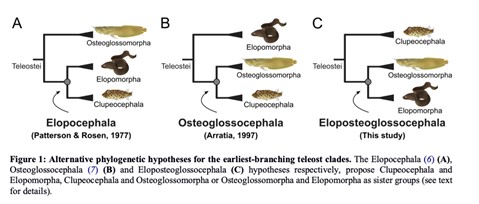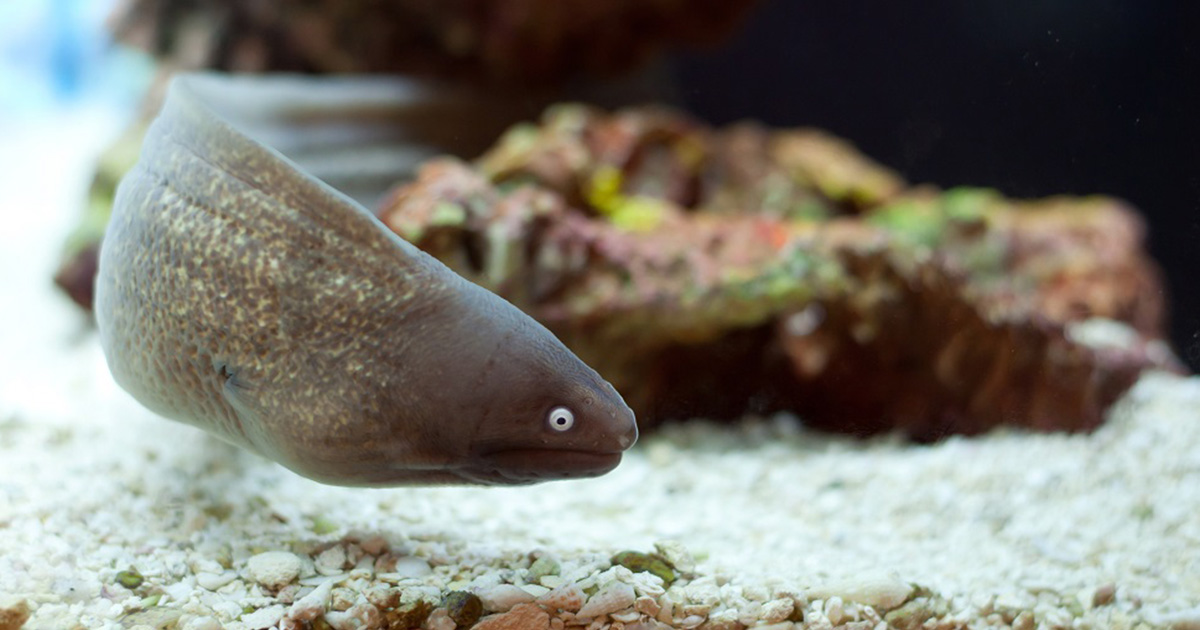The evolution and ancestry of a group of ray-finned fish called teleosts have been referred to as one of the major unresolved questions of the 21st century. With more than 30,000 species, these fish are by far the largest and the most diversified clade of existing vertebrates.
How they have evolved and diversified, however, has been and still is subject to many disputes at different taxonomic levels.
Based on seven high-quality new genome assemblies in tarpons and eels (Elopomorpha), Sahar Mejri, Ph.D., from Florida Atlantic University’s Harbor Branch Oceanographic Institute, is among a team of international scientists who have resolved a 50-year controversy on the evolutionary relationships of their lineages.
Their findings, published in the journal Science, highlight the power of combining different levels of genome-wide information to solve complex phylogenies.
Results from their study unequivocally demonstrate that Elopomorpha species (named after “Elops-like,” which includes tarpon, bonefish, and eels) and Osteoglossomorpha species (named after “bony-tongues,” which include goldeye, arapaima, and elephantnose fish) are sister groups that have descended from a common evolutionary ancestor. They now constitute a clade, which the research team proposes to name “Eloposteoglossocephala.”
 (Image credit: FAU)
(Image credit: FAU)
Elopomorpha are one of the three major living teleost lineages along with Osteoglossomorpha and Clupeocephala, which include zebrafish, a major biomedical species.
To unravel the evolutionary relationships of these early-branching teleost clades, the research team, led by scientists at the Institute Pasteur, Université de Paris; INSERM, PSL Université; and the French National Institute for Agriculture, Food, and Environment, in France, first sequenced, assembled, and annotated high-quality reference genome sequences of seven species that represent major Elopomorpha orders or families for which chromosome-level whole genome resources were lacking.
They combined genome information from these seven Elopomorpha species with additional publicly available genome assemblies, including four Osteoglossomorpha, ten Clupeocephala, and four vertebrate outgroups, including the spotted gar and bowfin non-teleost fishes, to perform phylogenomic analyses.
Researchers then performed phylogenetic reconstructions of 955 individual gene trees using 125 summary analyses with ASTRAL, one of the leading methods for inferring species trees from gene trees. Because previous sequence-based studies have yielded opposing results to resolve the three early diverging teleost branches, researchers also used two novel genome-wide methods to infer species trees based on conservation of genome structures.
“Working with an international team of scientists from France, the United States, Switzerland, China, The Netherlands, Norway, and Taiwan, we have succeeded to resolve an evolutionary disagreement among researchers, which has persisted for more than half a century,” said Mejri, co-author and an assistant research professor, Department of Aquaculture and Stock Enhancement at FAU Harbor Branch. “Our findings strengthen phylogenomics evidence for the Eloposteoglossocephala clade and demonstrate how using genome-wide methods is a powerful tool for answering complex questions about ancient evolution.”
Accurate species phylogenies are important for the understanding and representation of the evolution of life on earth but also are a fundamental prerequisite for evolutionary analyses at the developmental, anatomical, genetic, and species levels.
Based on these results, the researchers expect more character mapping and new targeted anatomical and morphological searches that will soon provide novel and non-ambiguous synapomorphies shared by the Osteoglossomorpha and Elopomorpha (Eloposteoglossocephala).
Corresponding authors of the study are Camille Berthelot, Ph.D., head of the Comparative Functional Genomics group at the Institute Pasteur, Université de Paris, and a research scientist at INSERM, PSL Université Paris; Hugues Roest Crollius, Ph.D., a research scientist at INSERM, PSL Université Paris; and Yann Guiguen, Ph.D., a research scientist with the French National Institute for Agriculture, Food, and Environment (INRAE).



